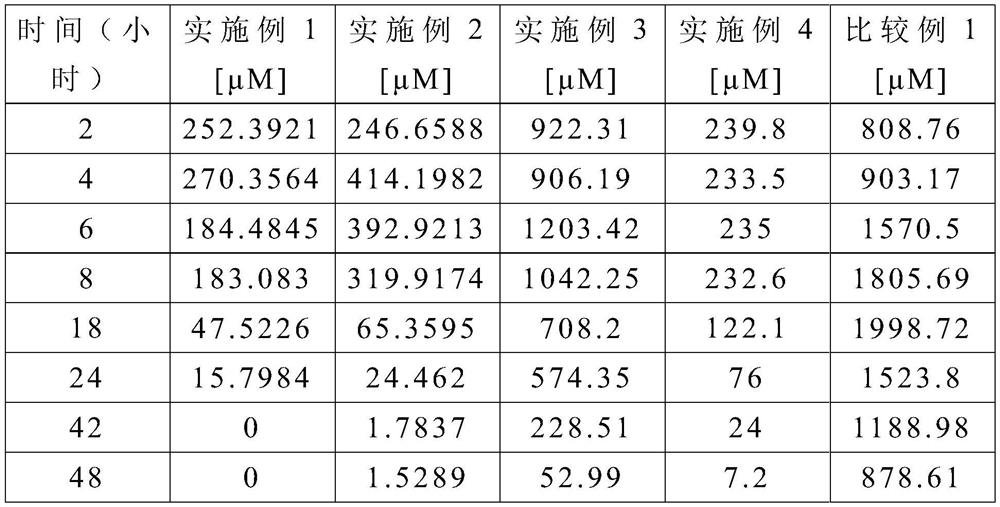Hydrogen sulfide slow-release dressing and method of manufacturing the same
A manufacturing method, hydrogen sulfide technology, applied in medical science, bandages, etc., can solve the problems of cell apoptosis or inflammation, cell toxicity, hydrogen sulfide toxicity, etc., and achieve the effect of promoting healing
- Summary
- Abstract
- Description
- Claims
- Application Information
AI Technical Summary
Problems solved by technology
Method used
Image
Examples
Embodiment 1
[0043] Get 15.4 grams of styrene-isoprene-styrene (SIS) copolymer (Kraton D1161, purchased from Kraton, the U.S.), 36.55 grams of C9 modified resin (Wingtack 86, purchased from CRAY VALLEY, the U.S.), 6.4 gram of mineral oil (Kaydol white mineral oil purchased from Sonneborn, the U.S.) and 1 gram of hindered phenol tetrakis (3,5-di-tert-butyl-4-hydroxyl) pentaerythritol phenylpropionate (Chinox 1010, purchased from Double Bond Chemicals , Taiwan, China) stirred at 180°C for 60 minutes under a nitrogen atmosphere, then cooled to 120°C, added 40 grams of sodium carboxymethylcellulose, 0.5 grams of surfactant Tween 80 and 0.15 grams of sodium hydrosulfide, stirred After 10 minutes, it is poured into a mold and heat-pressed at 90° C. to form a hydrogen sulfide sustained-release dressing.
Embodiment 2
[0045] The steps and materials of Example 2 are the same as in Example 1, except that 36.5 g of C9 modified resin is used instead of 36.55 g of C9 modified resin and 0.2 g of sodium hydrosulfide is used instead of 0.15 g of sodium hydrosulfide.
Embodiment 3
[0047] The steps and materials of Example 3 are the same as in Example 1, except that 15.3 grams of styrene-isoprene-styrene (SIS) copolymer is used instead of 15.4 grams of styrene-isoprene-styrene (SIS) Copolymer, replacing 36.55 grams of C9 modified resin with 36.3 grams of C9 modified resin and replacing 0.15 grams of sodium hydrosulfide with 0.5 grams of sodium hydrosulfide.
PUM
 Login to View More
Login to View More Abstract
Description
Claims
Application Information
 Login to View More
Login to View More - R&D Engineer
- R&D Manager
- IP Professional
- Industry Leading Data Capabilities
- Powerful AI technology
- Patent DNA Extraction
Browse by: Latest US Patents, China's latest patents, Technical Efficacy Thesaurus, Application Domain, Technology Topic, Popular Technical Reports.
© 2024 PatSnap. All rights reserved.Legal|Privacy policy|Modern Slavery Act Transparency Statement|Sitemap|About US| Contact US: help@patsnap.com








